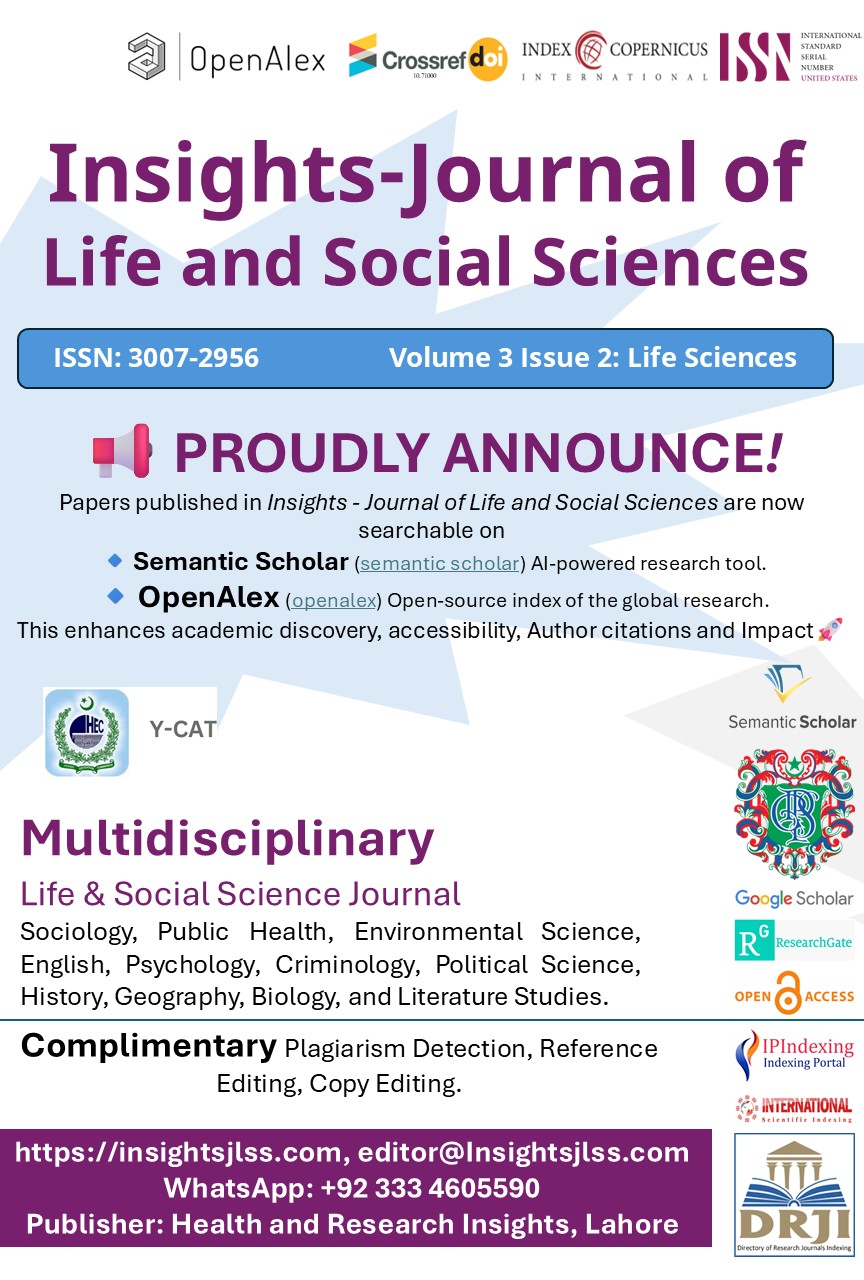BIODIVERSITY AND ECOLOGICAL DISTRIBUTION OF ANISOPTERA (DRAGONFLIES) AND ZYGOPTERA (DAMSELFLIES) IN DIR LOWER
Main Article Content
Abstract
Background: Odonates, including dragonflies and damselflies, play a crucial role in freshwater ecosystems, serving as bioindicators of environmental health and natural pest control agents. Their diversity and distribution are influenced by habitat availability, climatic conditions, and water quality. Despite their ecological importance, limited studies have been conducted on the biodiversity of Anisoptera in Dir Lower, Khyber Pakhtunkhwa. This study aims to document the species richness, evenness, and abundance of dragonflies in the region, providing essential baseline data for future ecological and conservation research.
Objective: To assess the species richness, relative abundance, and ecological distribution of Anisoptera in Dir Lower during the summer season of 2022.
Methods: Field surveys were conducted from June to August 2022 across diverse freshwater habitats, including streams, riverbanks, rice paddies, marshes, irrigation channels, and stagnant water bodies. Specimens were collected weekly and bi-weekly between 9:00 am and 4:00 pm using aerial nets with a standardized 1.5 mm mesh size. Identification was performed using stereomicroscopes and taxonomic keys. Data analysis included species richness, evenness, and relative abundance calculations.
Results: A total of 169 specimens were collected, comprising 146 males (86.39%) and 23 females (13.61%), with a male-to-female ratio of 6.35:1. The specimens were classified into 15 species under 10 genera and 3 families. The family Libellulidae was the most dominant, contributing 96.57% of the total specimens, followed by Aeshnidae (2.05%) and Gomphidae (1.36%). Orthetrum pruinosum neglectum was the most abundant species (20.54%), followed by Orthetrum triangulare triangulare (19.17%), while Anax immaculifrons and Onychogomphus bistrigatus were the least abundant (1.36% each).
Conclusion: The findings highlight the ecological significance of dragonflies in Dir Lower, emphasizing the need for habitat conservation. The dominance of Libellulidae suggests its adaptability to diverse freshwater environments. Future studies focusing on seasonal variations, larval stages, and environmental factors are recommended for a comprehensive understanding of Odonata biodiversity.
Article Details

This work is licensed under a Creative Commons Attribution-NonCommercial-NoDerivatives 4.0 International License.
